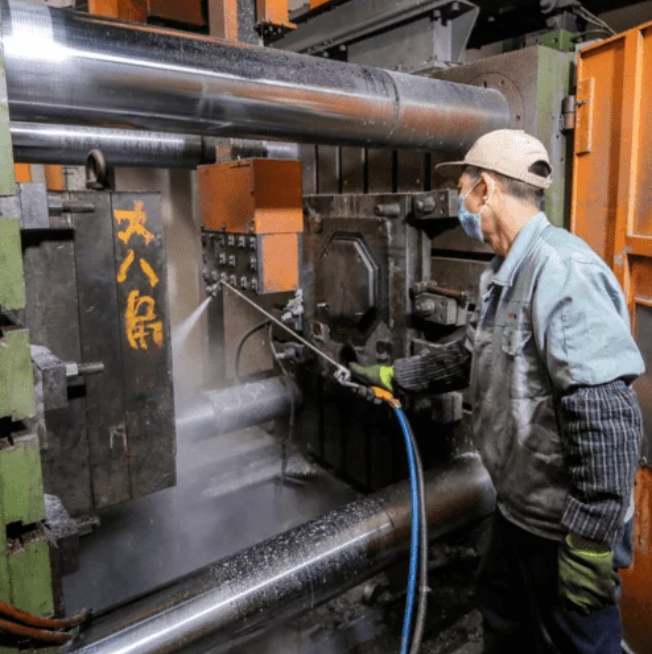Die casting is a highly versatile manufacturing process that is used to produce complex and dimensionally accurate metal parts. It involves injecting molten metal into a steel mold, known as a die, under high pressure. Once the metal solidifies, the die is opened, and the cast part is ejected. Die casting is widely used in various industries, including automotive, aerospace, consumer electronics, and medical devices. In this article, we will provide an introduction to die casting, including its process and applications.
The die casting process begins with the preparation of the die. The die is typically made from hardened steel and consists of two halves, known as the cover die and the ejector die. These halves are precision-machined to create the desired shape of the final part. Additionally, the die contains runners and gates, which allow the molten metal to flow into the cavity and fill it completely.
Once the die is prepared, the next step is the preparation of the molten metal. The most commonly used metals in die casting include aluminum, zinc, and magnesium alloys. These metals are melted in a furnace and then injected into the die using a hydraulic or mechanical press. The high pressure ensures that the molten metal fills the mold completely and solidifies quickly.
The solidification of the metal is a critical step in the die casting process. It determines the final quality and dimensional accuracy of the cast part. To control the solidification, the die is equipped with cooling channels that circulate water or oil. These channels help dissipate the heat from the molten metal, allowing it to solidify evenly and rapidly.
Once the metal solidifies, the die is opened, and the cast part is ejected. The part is then trimmed to remove any excess material, such as flash or gate remnants. The final step is finishing, which involves polishing, machining, or coating the part to achieve the desired surface finish and appearance.
Die casting offers several advantages over other manufacturing processes. First, it allows for the production of complex shapes with high dimensional accuracy. The use of a steel mold ensures consistent part quality, and the high pressure ensures that the metal fills even the smallest details of the mold. Second, die casting is a highly efficient process that enables high production rates. The quick solidification of the metal allows for rapid cycle times, making it ideal for mass production. Lastly, die casting is a cost-effective method, especially for large production runs. The initial tooling cost may be high, but the per-part cost decreases as the production volume increases.

Die casting finds applications in a wide range of industries. In the automotive industry, it is used to produce engine components, transmission cases, and structural parts. The aerospace industry utilizes die casting for manufacturing aircraft components, such as turbine blades and structural parts. In the consumer electronics industry, die casting is commonly used for producing smartphone and laptop cases, as well as heat sinks. The medical device industry also benefits from die casting, with applications in the production of surgical instruments and implantable devices.
In conclusion, die casting is a versatile manufacturing process that offers high dimensional accuracy and the ability to produce complex shapes. It is widely used in various industries, including automotive, aerospace, consumer electronics, and medical devices. The process involves injecting molten metal into a steel mold under high pressure, followed by the solidification and ejection of the cast part. Die casting provides numerous advantages, such as high production rates and cost-effectiveness. With its wide range of applications, die casting continues to play a vital role in modern manufacturing.
-

- Magnesium alloy Thixomolding power batter housing
-

- OEM Die casting manufacturer produce magnesium alloy auto dashboard
-

- OEM die casting service metal components of macbook middle
-

- Factory Custom China Bmx Cycles Road Sport Kids Bicycle 12 16 18 20 Inches Cycle Mtb For Kids 6-10 Year
-

- Magnesium alloy foundry parts bicycle wheel with CNC machining & surface finishing
-

- Magnesium alloy die-casting Auto parts Front bumper Anti-collision beam

 0086-750-5616188
0086-750-5616188 +86 13392089688
+86 13392089688 sales@zhongmei-tech.com
sales@zhongmei-tech.com







